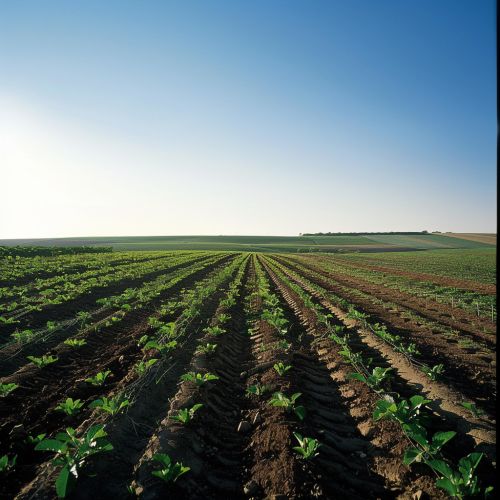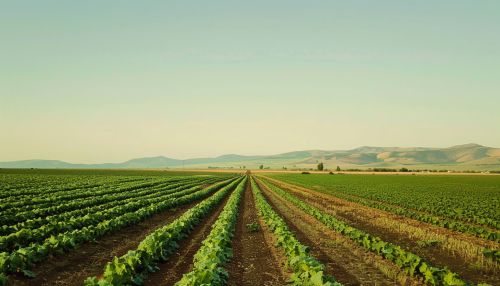Land Grabbing
Introduction
Land grabbing refers to the contentious issue of large-scale land acquisitions, often involving the purchase or lease of vast tracts of land by domestic or transnational companies, governments, or individuals. This phenomenon has gained significant attention in recent years due to its implications for food security, environmental sustainability, and human rights. The term is often used to describe situations where the land acquisition process is non-transparent, lacks adequate compensation, or disregards the rights of local communities.
Historical Context
Land grabbing is not a new phenomenon. Historically, it has roots in colonialism, where European powers acquired large territories in Africa, Asia, and the Americas. These acquisitions were often justified under the guise of civilizing missions or economic development but frequently resulted in the exploitation and displacement of indigenous populations. The modern wave of land grabbing, however, began in the early 21st century, driven by factors such as the global food crisis of 2007-2008, rising food prices, and increased demand for biofuels.
Drivers of Land Grabbing
Economic Factors
Economic motivations are among the primary drivers of land grabbing. Investors seek to capitalize on the potential for high returns from agricultural production, mining, and forestry. The promise of foreign direct investment (FDI) often lures developing countries into leasing or selling large tracts of land. However, these investments frequently prioritize export-oriented production, which can undermine local food security.
Political Factors
Political instability and weak governance structures also contribute to land grabbing. In many cases, corrupt officials facilitate land deals that benefit a small elite while marginalizing local communities. Additionally, the lack of clear land tenure systems makes it easier for governments and corporations to acquire land without facing significant legal challenges.
Environmental Factors
Environmental factors, such as climate change and desertification, have also played a role in land grabbing. As arable land becomes scarcer, countries and corporations seek to secure fertile land to ensure future food production. This has led to the acquisition of land in regions with favorable agricultural conditions, often at the expense of local populations.
Impacts of Land Grabbing
Social Impacts
Land grabbing has profound social implications, particularly for indigenous peoples and smallholder farmers. Displacement and loss of livelihoods are common consequences, leading to increased poverty and social unrest. The lack of consultation and compensation exacerbates these issues, as affected communities often have little recourse to legal remedies.
Economic Impacts
While proponents argue that land investments can spur economic development, the reality is often more complex. The focus on large-scale, export-oriented agriculture can undermine local food systems and increase dependency on global markets. Moreover, the promised benefits of job creation and infrastructure development frequently fail to materialize, leaving local communities worse off.
Environmental Impacts
The environmental consequences of land grabbing are significant. Large-scale agricultural projects often involve deforestation, soil degradation, and water pollution. The shift towards monoculture farming can reduce biodiversity and increase vulnerability to pests and diseases. Additionally, the conversion of forests and wetlands into agricultural land can exacerbate climate change by releasing stored carbon into the atmosphere.
Case Studies
Africa
Africa has been a focal point for land grabbing, with countries like Ethiopia, Sudan, and Mozambique experiencing significant land acquisitions. In Ethiopia, for example, the government has leased millions of hectares of land to foreign investors, often displacing local communities and leading to conflicts over land rights.
Asia
In Asia, countries like Cambodia and Indonesia have seen extensive land grabbing for agricultural and industrial purposes. In Cambodia, land concessions for rubber plantations have led to the displacement of thousands of families and the destruction of rainforests. In Indonesia, the expansion of palm oil plantations has had devastating effects on both local communities and the environment.
Latin America
Latin America has also been affected by land grabbing, particularly in countries like Brazil and Argentina. In Brazil, large-scale land acquisitions for soybean production and cattle ranching have led to deforestation and conflicts with indigenous communities. In Argentina, the expansion of agribusiness has resulted in the concentration of land ownership and the marginalization of small farmers.
Legal and Policy Responses
International Frameworks
Various international frameworks aim to address the issue of land grabbing. The Voluntary Guidelines on the Responsible Governance of Tenure (VGGT), adopted by the Food and Agriculture Organization (FAO) in 2012, provide principles and standards for responsible land tenure governance. These guidelines emphasize the importance of respecting human rights, ensuring transparency, and promoting equitable access to land.
National Policies
At the national level, countries have implemented various policies to regulate land acquisitions. Some have introduced land tenure reforms to strengthen the rights of local communities, while others have established regulatory frameworks to ensure that land deals are conducted transparently and fairly. However, the effectiveness of these policies often depends on the political will and capacity of governments to enforce them.
Civil Society Initiatives
Civil society organizations play a crucial role in combating land grabbing. They engage in advocacy, raise awareness, and provide legal support to affected communities. Initiatives like the International Land Coalition (ILC) work to promote secure and equitable access to land, particularly for marginalized groups.
Future Prospects
The future of land grabbing remains uncertain. While increased awareness and advocacy efforts have led to some positive changes, the underlying drivers of land grabbing—economic, political, and environmental—persist. Addressing these issues requires a multifaceted approach that includes strengthening land tenure systems, promoting sustainable agricultural practices, and ensuring that the rights of local communities are respected.
See Also
References


